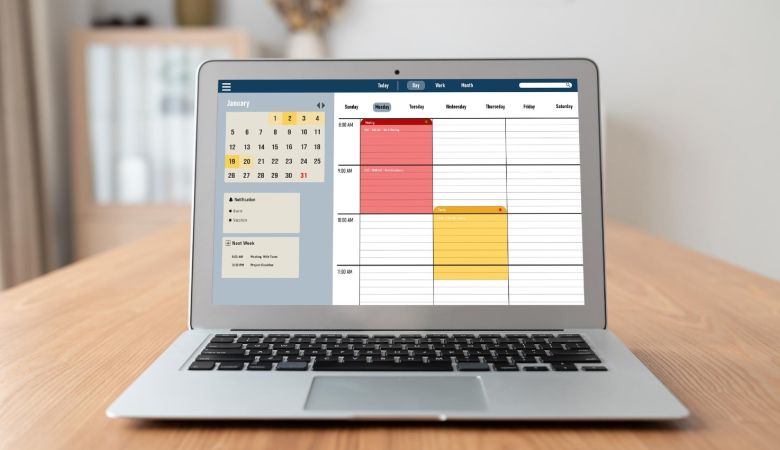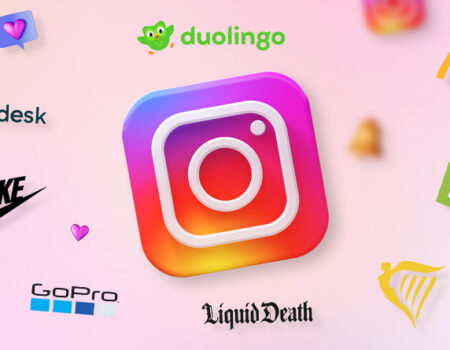I Tested Different Social Media Content Calendar Tools — Here’s How They Performed
What do cross-country road trips, wedding speeches, and social media marketing have in common? Planning. I definitely can’t help you with your road trip or wedding speech (sorry), but I can help you create a social media content calendar to organize your next marketing campaign.
As marketers, we recognize that social media is integral to an effective inbound marketing strategy. With so many social networks available to us, staying organized and planning for when and what we share is crucial. This is exactly where a social media calendar enters the picture.
Managing your social media presence doesn’t have to feel chaotic. A well-structured social media calendar can be your best friend—helping you stay consistent, creative, and strategic with every post. Whether you’re a small business, marketer, or influencer, this guide will show you how to plan your content like a pro.
What is a Social Media Calendar?
A social media content calendar is a rundown of your upcoming posts organized by date and time. A social media calendar can be a spreadsheet, digital calendar, or interactive dashboard. It includes information such as:
- Posting dates
- Content types (image, video, reel, blog link, etc.)
- Captions and hashtags
- Platforms (Instagram, Facebook, LinkedIn, etc.)
Think of it as your digital planner that keeps your content pipeline full, your strategy aligned, and your audience engaged.
Benefits of Using a Social Media Content Calendar & Content Planner
A successful social media strategy requires regular publishing and engaging with followers to see positive results — whether you’re looking for sales, brand recognition, lead generation, or all three.
If you’re not already using a social media content planner, here are a few advantages to pique your interest.
- Better Organization: Having a calendar means all your content ideas, captions, hashtags, and schedules are in one spot. This reduces chaos, helps you plan ahead, and avoids missing out on trending topics or deadlines.
- Consistency: Regular posting builds a reliable online presence. Your audience knows when to expect content from you, which increases engagement and keeps your brand top-of-mind.
- Strategic Planning: A calendar lets you plan content around key dates like product launches, sales, holidays, or awareness days—helping you create timely, relevant posts that support your business goals.
- Improved Team Collaboration: When everyone on your team can access the calendar, it keeps things transparent. Writers, designers, and marketers can stay aligned and work efficiently without confusion or duplication.
- Time Management: By planning and scheduling posts in advance (batch-creating), you save hours each week. This frees up your time for engagement, analytics, and other marketing tasks.
How to Create a Social Media Calendar That Works
To create an effective social media calendar, you should:
1. Start with a Social Media Audit
Before planning anything new, it’s important to understand what’s currently working (and what’s not).
A social media audit helps you review your performance, engagement, and audience behavior.
Here’s what to look at:
- Engagement rate (likes, shares, comments)
- Conversion rate (leads or sales generated)
- Click-through rate (how often people click your links)
- Reach & impressions (how many people are seeing your content)
Most platforms have built-in analytics that show your top-performing posts. Study them closely—what content gets the most attention? When is your audience most active?
This gives you a strong foundation to build a better plan.
2. Align Your Content with Business Goals
Social media isn’t just about likes and followers—it should support your overall business objectives.
Ask yourself:
- Are you trying to drive traffic to your website?
- Promote a product or service?
- Build brand awareness?
For example, if your company wants to increase sales of a new product, you might:
- Create a blog or press release about it
- Share sneak peeks and benefits on social media
- Track clicks and conversions from your posts
Make sure every piece of content moves you closer to your goals.
3. Run a Competitive Analysis
Want to stay ahead of the competition? Study them!
Look at:
- What kind of content they post?
- How often they post?
- How their audience engages?
Are they getting more likes and comments? Are they using newer features like Reels, Lives, or Polls?
Use this info to find gaps in your own strategy or to discover new content ideas.
Free templates (like those from HubSpot) can help you organize this research easily.
4. Choose the Right Platforms
Not every platform is right for every brand.
Your audit will show which channels perform best, but you also need to understand where your target audience spends time.
For example:
- Gen Z loves TikTok
- Millennials are active on Instagram and Facebook
- Professionals hang out on LinkedIn
Focus on 2–3 platforms where your audience is active and your content performs best.
5. Plan What Type of Content to Post
Once you’ve chosen your platforms, decide what kind of content you’ll post.
Great social media calendars include a mix of content types:
- Videos & Reels
- Images & infographics
- Text-based posts
- User-generated content
- Testimonials & reviews
- Behind-the-scenes looks
For example, a brand like Glossier posts influencer videos on YouTube, cultural takes on LinkedIn, and fun discussions on Reddit. Each platform has a different tone and style.
Batch-create your content where possible—it saves time and keeps quality high.
6. Build Your Actual Calendar
Now that you’ve done your research and planned your content, it’s time to put it all together.
Your calendar should include:
- Platform name (e.g., Instagram, TikTok)
- Post date & time
- Captions
- Images or video links
- Relevant hashtags or tags
Pro tip: Use color-coding to quickly identify content types—product promos, educational posts, user content, etc.
As you grow, consider including extras like:
- Reels, Lives, Stories
- Geo-targeted posts
- Campaign or product launch details
7. Share and Get Feedback
Don’t build your calendar in a vacuum. Once it’s ready, share it with your team.
Writers, designers, and managers should all have access and give input.
Their feedback can improve the timing, visuals, or messaging of your content.
Make sure your calendar is easy to understand—even for stakeholders who don’t need to see every detail.
8. Use the Right Tools and Templates
There are many tools to help you create and manage your calendar. Some popular options include:
- Google Sheets or Excel (simple and free)
- Trello or Notion (great for visual planning)
- HubSpot Social Media Tool (analytics + scheduling)
- Later or Buffer (auto-scheduling and previews)
Pick a tool that fits your workflow and team structure.
You can also use free templates to get started and customize them as you go.
Social Media Calendar Examples
Here are some real-world examples:
Example 1: Monthly Overview
| Date | Platform | Content Type | Caption | Hashtags | Status |
|---|---|---|---|---|---|
| April 12 | Image Post | “5 tips to boost engagement” |
#SocialTips #GrowOnline |
Scheduled |
Example 2: Weekly Themed Calendar
- Monday: Motivation Post
- Wednesday: Blog Share
- Friday: Behind-the-Scenes Reel
- Sunday: Customer Testimonial
Social Media Content Calendar Tools to Plan Your Messaging
As I mentioned above, I handled social media for a nonprofit before working at HubSpot. I was mostly a novice, and the nonprofit was small, so I felt that a template was all I needed.
At the same time, a social media content calendar tool would’ve cut my planning time in half and given me more time to focus on creating content to share. Tools are helpful for anyone, regardless of experience level or business size.
I tested some of the leading social media calendar tools to give you a sense of how to make them work for your needs, and I compiled my main takeaways below. Consider the following factors (based on your needs):
- Functionality. Some tools are simple, and you’d use them to plan content before posting it yourself, and others are more advanced, automated tools that go a step further and post content for you.
- Features. The tool should offer the specific features you need, like managing multiple social media accounts or giving multiple team members access to the dashboard.
- Customizations. Calendars should let you customize the layout, categories, tags, or other factors relevant to your needs.
- Ease of use. A user-friendly and intuitive interface makes your job easier and helps you get started faster.
- Cost. You want a tool that’s within budget and includes all the necessary features.
1. HubSpot’s Downloadable Template for Excel Content Calendar
Price: Free
Trial: Not applicable
This is a simple yet powerful Excel-based content calendar template provided by HubSpot. It’s perfect for teams that prefer to manage their social content manually without investing in expensive tools. The template includes monthly views, scheduling columns, platform tags, and space for links, graphics, and copy. Ideal for beginners and small businesses that want to stay organized without extra costs.
Why I Like It:
I love how simple and intuitive this tool is, especially for small teams or solo marketers with a heavy workload. The color-coded calendar, the monthly planning tab, and the platform-specific sheets make it super easy to organize content. Plus, the content repository tab helps me keep track of what’s been posted and what can be reused — a huge time saver!
2. HubSpot Social Media Management Software
Price: Starts at $800/month (part of the Marketing Hub Professional plan)
Trial: 14-day free trial available
HubSpot’s social media software is an all-in-one solution for publishing, monitoring, and reporting. It allows you to schedule posts across platforms, track performance metrics, and even compare results with other marketing channels like email and blogging. It’s perfect for marketing teams already using HubSpot’s CRM or inbound tools.
Why I Like It:
This tool is great because it allows me to draft, schedule, and publish content across platforms in one dashboard. The AI assistant is a bonus for drafting copy faster, and I appreciate the ability to track engagement and ROI directly from the same space. The calendar view helps ensure I’m staying consistent with my posting schedule.
3. Google Drive (Sheets & Docs)
Price: Free with a Google account
Trial: Not applicable
Google Drive, specifically Google Sheets, is a flexible, collaborative way to build your own social media calendar. You can customize your spreadsheet with dates, post ideas, links, and visuals. Since it’s cloud-based, your entire team can view and edit in real time, making it a great low-cost option for remote or startup teams.
Why I Like It:
Google Drive is just so flexible and familiar — there’s no steep learning curve. I can use Google Calendar for scheduling, Google Sheets for tracking post status and assigning tasks, and Docs for real-time collaboration. It’s perfect for quickly syncing with teammates and managing approvals without messy email threads. I especially love the centralized workflow where creatives and planners work in harmony.
4. Loomly
Price: Starts at $42/month (Base Plan)
Trial: 15-day free trial
Loomly is a user-friendly platform designed for both solo marketers and teams. It offers content planning, post previews, collaboration tools, and automatic publishing across all major platforms. Its calendar view is intuitive, and it even suggests post ideas based on trending topics and best practices.
Why I Like Loomly:
I love Loomly because it’s super beginner-friendly and keeps the entire team aligned. It suggests post ideas, helps with real-time collaboration, and even previews posts before publishing. Great for organized planning and approval workflows!
5. Later
Price: Free plan available; Paid plans start at $25/month
Trial: Free plan; no trial needed
Later is a visual social media planner, especially great for Instagram. It offers drag-and-drop scheduling, content auto-publishing, and a media library. You can plan your feed visually, which is a big plus for brands focused on aesthetic. It also supports TikTok, Facebook, Pinterest, LinkedIn, and Twitter.
6. Sprout Social
Price: Starts at $249/month (Standard Plan)
Trial: 30-day free trial
Sprout Social is a premium social media management platform built for businesses and agencies. It offers powerful scheduling, analytics, social listening, and team collaboration tools. Its clean dashboard and detailed reporting make it ideal for data-driven marketers who need insights as much as publishing power.
7. Hootsuite
Price: Starts at $99/month (Professional Plan)
Trial: 30-day free trial
One of the oldest and most trusted social media schedulers, Hootsuite allows users to manage multiple platforms, schedule content, and track performance from a single dashboard. It supports team collaboration and integrates with over 20+ social networks, making it great for mid-size to large businesses.
Why I Like Hootsuite:
Hootsuite is a powerhouse. I can manage multiple platforms, schedule posts, and track performance all in one dashboard. I like how it simplifies monitoring engagement and pulling reports – huge time-saver!
8. Agorapulse
Price: Starts at $49/month (Standard Plan)
Trial: 30-day free trial
Agorapulse is an all-in-one social media management tool with features for scheduling, inbox management, reporting, and social listening. It’s especially useful for agencies thanks to its clean interface, client management tools, and detailed performance reports.
Bonus: it offers competitor analysis too.
Why I Like This
Social Media Calendar Tool I really like how straightforward Agorapulse’s interface is and how the welcome post immediately got me started with linking my social profiles.The drag-and-drop builder made it easy for me to add posts to my calendar. Plus, I got a preview of what my posts would look like on each platform with the live editor.I could view my calendar in a list, week, or month view, making it easy to get an overview or go more in-depth.
Partner with our Digital Marketing Agency
Ask Engage Coders to create a comprehensive and inclusive digital marketing plan that takes your business to new heights.
Contact Us
Conclusion
A social media calendar isn’t just a tool—it’s your strategy in action. It keeps you consistent, creative, and always ready to post. Whether you’re managing a brand or growing your personal profile, planning ahead will always give you the edge.
Boost Your Social Media with Engage Coders
From strategy to content scheduling, we help brands grow online with expert social media marketing services.
Let’s elevate your online presence — contact us today!


![How to Create a Social Media Report in 7 Simple Steps [+ Free Templates]](https://ea317a72.delivery.rocketcdn.me/wp-content/uploads/2025/04/How-to-Create-a-Social-Media-Report-in-7-Simple-Steps-Free-Templates-450x350.jpg)





